Shoefiti, a curious blend of “shoe” and “graffiti,” is a phenomenon where shoes tied together by their laces are thrown over power lines, telephone wires, or other overhead structures. This intriguing act is commonly seen in urban areas and carries various interpretations depending on the context and location. Let’s delve into ten fascinating facts about shoefiti.
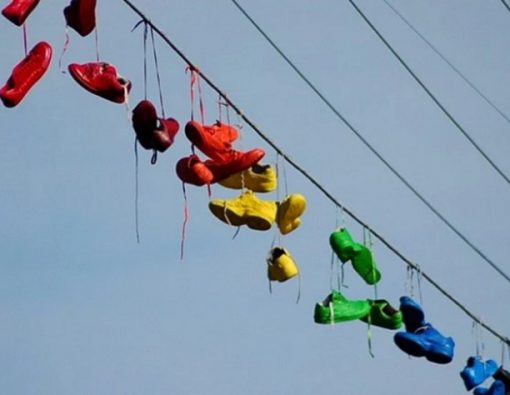
1. Origin of Shoefiti
The origins of shoefiti are somewhat murky, with early instances difficult to pinpoint. However, the practice is thought to have gained popularity in the United States during the mid-20th century. Cultural variations exist worldwide, with different regions attributing their own meanings and significance to the act of shoe tossing.

2. Common Locations for Shoefiti
Shoefiti is typically observed in urban environments, where power lines, telephone wires, and even trees serve as canvases for these suspended shoes. While it’s more common in cities, rural areas are not entirely exempt. The presence of shoefiti can significantly impact the aesthetic of a neighbourhood, sometimes adding a unique urban charm, while other times appearing as an eyesore.
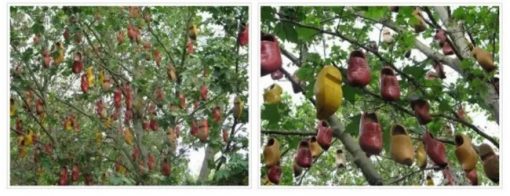
3. Symbolism and Interpretations
The meanings behind shoefiti are as varied as the locations where it’s found. In some neighbourhoods, shoefiti is believed to signify gang territory or mark the boundaries controlled by certain groups. In other cases, it serves as a memorial or tribute to commemorate someone who has passed away. Additionally, shoe tossing can celebrate life events such as graduations or the completion of military service.

4. Shoefiti as Urban Art
From another perspective, shoefiti can be seen as a form of urban art, akin to graffiti. Some view it as an expressive, albeit unconventional, art form that adds to the character of a city. There have been artistic installations where shoefiti is used deliberately to make a statement or enhance the urban landscape.
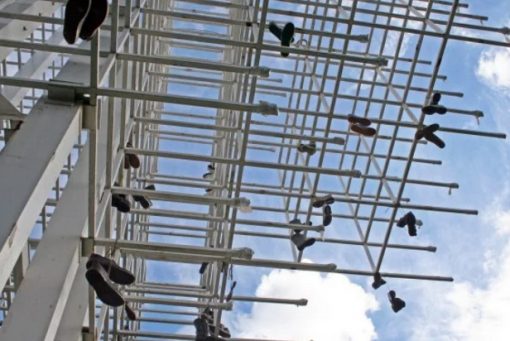
5. Legal and Safety Concerns
Despite its artistic interpretations, shoefiti poses several legal and safety concerns. Shoes hanging from power lines can interfere with electrical infrastructure, posing potential hazards. Consequently, many cities have regulations against shoefiti and initiatives to remove these shoes to ensure public safety and maintain urban aesthetics.
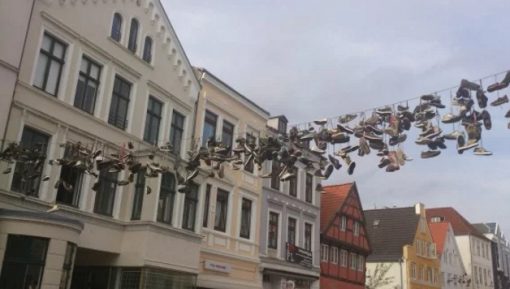
6. Shoefiti in Popular Culture
Shoefiti has found its way into popular culture, being depicted in films, TV shows, and literature. It’s referenced in music and other media, influencing fashion and street culture. These depictions often add to the mystique and varied interpretations of the phenomenon.
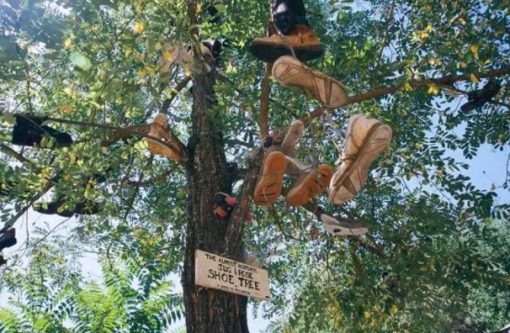
7. Community Responses
Community responses to shoefiti vary widely. Some see it as a harmless prank or a local tradition, while others view it as vandalism. There are initiatives both to clean up shoefiti and to preserve it as part of urban culture. Public opinion is often divided, leading to debates about the practice’s significance and impact.

8. Psychological and Sociological Insights
Psychologically, shoe tossing can be seen as a form of rebellion or identity expression. Sociologically, it reflects the complex dynamics of urban life, where personal expression meets public space. Research on shoefiti explores these motivations and the social implications of the practice.

9. Notable Shoefiti Spots Around the World
Certain locations have become notable for their shoefiti displays, attracting tourists and enthusiasts. Famous spots include the streets of New York City, Melbourne’s urban landscapes, and various locations across Europe. Each of these places often has its own stories and legends associated with the shoefiti found there.

10. How to Interpret Shoefiti in Your Area
Understanding the meaning of shoefiti in your local area involves engaging with the community and respecting cultural contexts. It’s important to consider local traditions and the specific circumstances that might lead to shoe tossing. Talking to residents can provide insights into the significance behind the shoes hanging overhead.
Shoefiti is a multifaceted phenomenon with meanings that range from territorial markers to artistic expressions. Its presence in urban areas speaks to the diverse ways people interact with their environment and express themselves. Whether seen as art, memorials, or mischief, shoefiti remains a compelling element of urban culture.
Have you encountered shoefiti in your area? Share your stories and interpretations in the comments below! For more intriguing insights into urban culture, subscribe to our blog and share this article on social media to spread the word about the fascinating world of shoefiti.